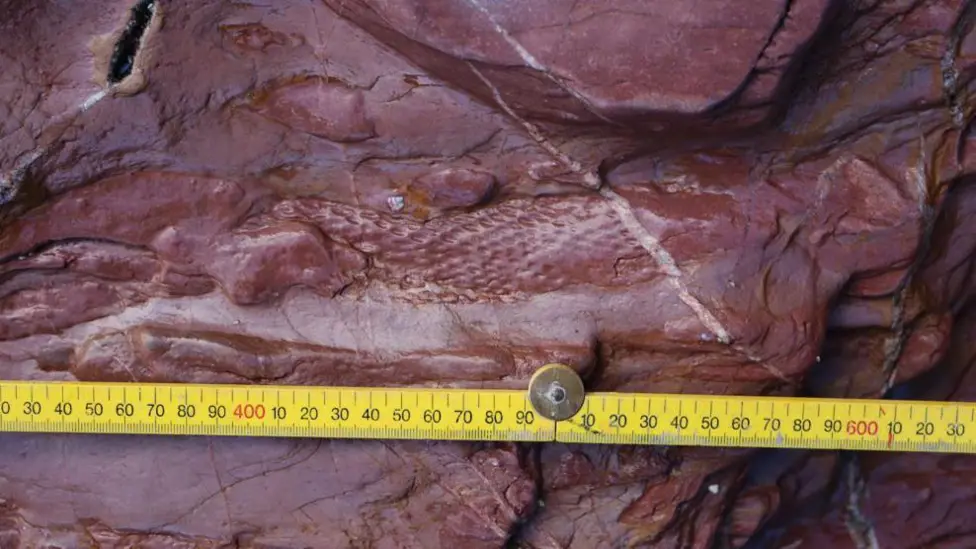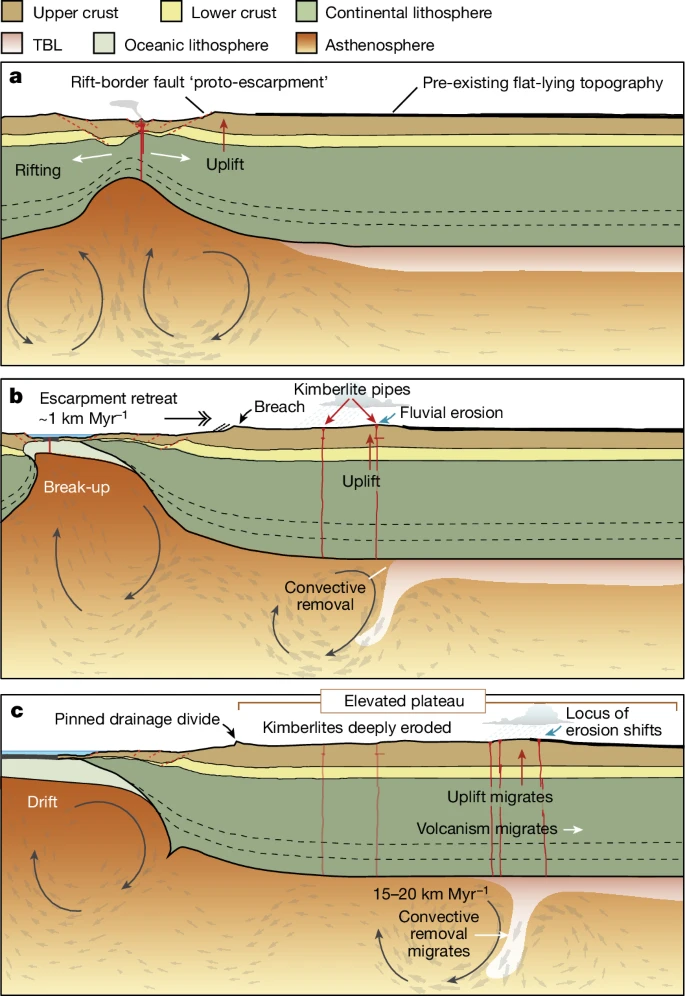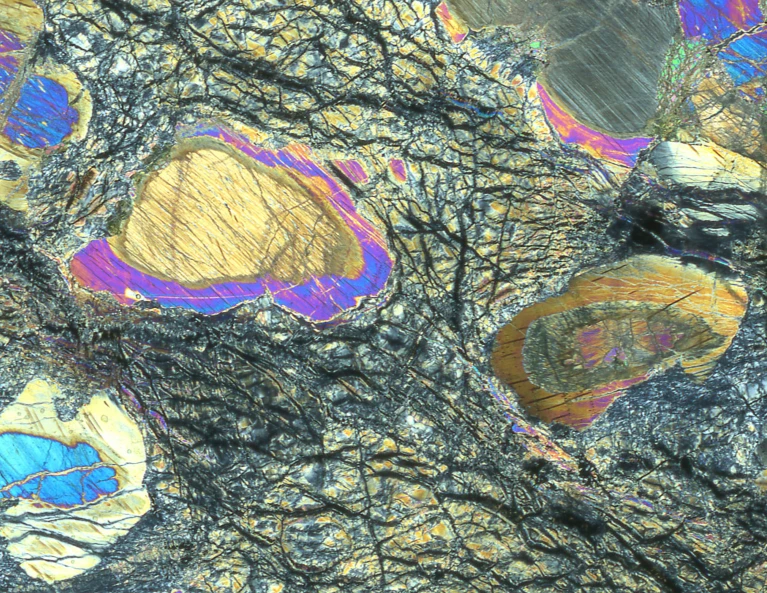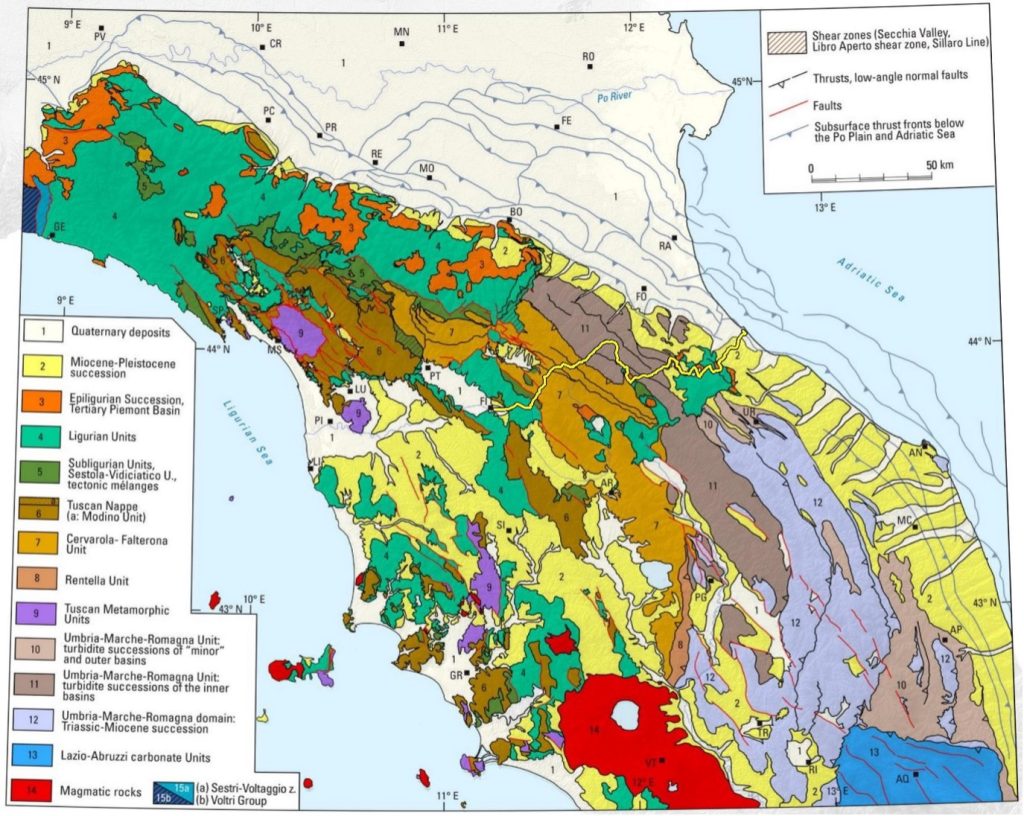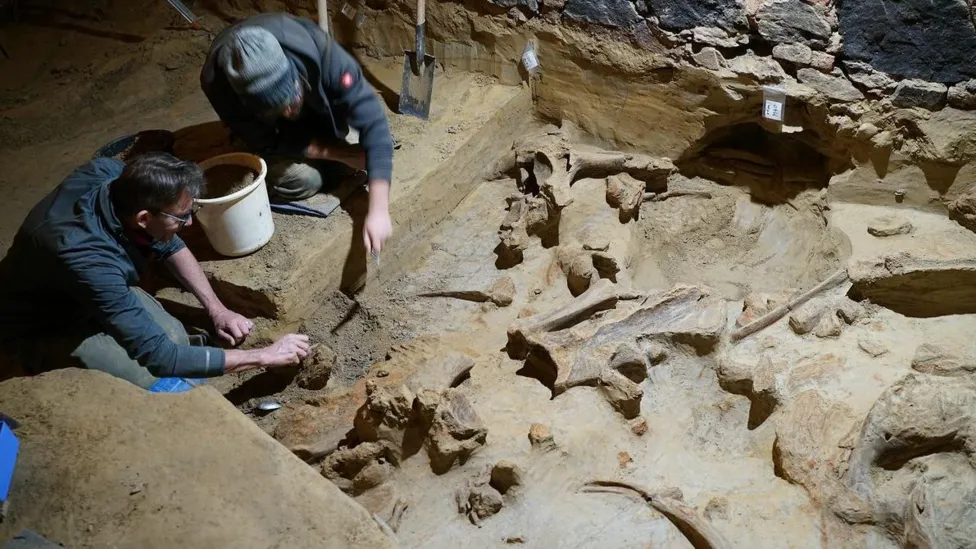Talks, field trips and events organised by west country geological organisations are publicised on this blog. Discussion about geological topics is encouraged. Anything of general geological interest is included.
Monday, 30 December 2024
Fossil Tree Found at Saltern Cove, near Paignton
Monday, 23 December 2024
Making "White" Hydrogen - Pity About the Ophiolite
Making "White" Hydrogen - Pity About the Ophiolite
Saturday, 14 December 2024
Nautilus Video
Nautilus Video
Saturday, 30 November 2024
Down to Earth Extra December 2024
Down to Earth Extra December 2024
Saturday, 16 November 2024
Crystals Hold Secret of When Volcanoes Erupt
Crystals Hold Secret of When Volcanoes Erupt
Saturday, 2 November 2024
Down to Earth Extra November 2024
Down to Earth Extra November 2024
Wednesday, 23 October 2024
Giant Meteorite Strike - the Pluses and Minuses
Giant Meteorite Strike - the Pluses and Minuses
Rock and thin section images of the Bruce’s Hill and Umbaumba sections. (A–C) Outcrop photos of the Umbaumba section. (A) Overview of the Umbaumba section showing, from base to top, BWBC, S2, fallback layer, and BWBC. (B) S2 spherule bed. (C) Lower part of the fallback layer showing fine laminations. This black chert is composed of silicified carbonaceous matter, siliciclastic debris, and impact-generated dust settling out of the atmosphere. (D and E) Outcrop photos of the Bruce’s Hill section. (D) BWBC below S2. (E) Alternating siliciclastic and siderite-rich chert beds. (F–G) Representative thin section images of carbonaceous matter. (F) Laminated carbonaceous chert below S2 in the Umbaumba section (SI Appendix, Fig. S4). Red arrows indicate fractures filled by chert. (G) Clots of carbonaceous matter and other siliciclastic debris from the fallback later in the Umbaumba section.
Tuesday, 15 October 2024
Etheldred Benett Memorialised
Etheldred Benett Memorialised
- Wiltshire Council which gave the largest sum as allocated by the Area Board for the Warminster area.
- HOGG gave a contribution and gave advice on the wording used on the memorial board.
- The Curry Fund of the GA gave funds. Dennis Curry, who was a gifted geologist, was the oldest son of the founder of Curry’s the electrical retailer. He took over the firm on the death of his father. His generous gift of shares to the GA provided the capital for the establishment of the Curry Fund which makes grants to support geological projects throughout the country. This is not the first time that the Wiltshire Geology Group has used grants from the Curry Fund. Some years ago when Curry’s, the business, was involved in restructuring an individual involved bought Pyt House, the birthplace of EB. That property is now on the market again at £18 million – small world!
- Lovell Stone now own Chicksgrove Quarry near Tisbury, the location for EB’s first ever measured and labelled geological section in 1815, described as ‘an indefatigable feat’. Simon Hart, the CEO also made a donation.
- Professor Renee Clarey of Mississippi State University also secured a donation from the Geological Association of America.
Saturday, 5 October 2024
Hurricane Helene - an Interesting Video
Hurricane Helene - an Interesting Video
Two Indoor Courses from Nick Chidlaw
Two Indoor Courses from Nick Chidlaw
Saturday, 28 September 2024
Earth may once have had a ring like Saturn
Earth may once have had a ring like Saturn
Friday, 20 September 2024
Down to Earth Extra October 2024
Down to Earth Extra October 2024
Friday, 23 August 2024
Mantle Waves Form Mountains
Mantle Waves Form Mountains
a, Rifting causes edge-driven convection in the mantle, rift-flank uplift and escarpment formation. b, Rayleigh–Taylor instability migrates along the lithospheric root, resulting in convective removal of the TBL of the lithospheric keel, driving kimberlite volcanism11, isostatic uplift and denudation. c, Escarpment becomes a pinned drainage divide that is locally breached by the main rivers draining the plateau. Meanwhile, the convective instability continues to migrate towards the continental interior, leading to isostatic uplift, a shift in the locus of erosion and plateau formation (Fig. 4).
Down to Earth Extra September 2024
Down to Earth Extra September 2024
Thursday, 15 August 2024
Orcadian Basin Rock at Stonehenge!
Orcadian Basin Rock at Stonehenge!
Mantle Drilled
Mantle Drilled
Tuesday, 6 August 2024
Phosphorus Presence Leads to Macrofossils?
Phosphorus Presence leads to Macrofossils?
Saturday, 27 July 2024
Cave Man in the Moon?
Cave Man in the Moon?
Down to Earth Extra August 2024
Down to Earth Extra August 2024
Thursday, 25 July 2024
Oxygen - is Sunshine Needed?
Oxygen - is Sunshine Needed?
Thursday, 18 July 2024
What is the Younger Dryas?
What is the Younger Dryas?
Saturday, 6 July 2024
Heart of Wales Geopark Opening
Heart of Wales Geopark Opening
Down to Earth Extra July 2024
Down to Earth Extra July 2024
Saturday, 29 June 2024
The Best Preserved Trilobites
The Best Preserved Trilobites
Tour de France Geology
Tour de France Geology
Tectonic units of the Northern Apennines with indicated buried faults (Figure from Conti et al., 2020). The course of stage 1 in yellow.
Friday, 21 June 2024
Is Geological Research Becoming Less Interesting?
Is Geological Research Becoming Less Interesting?
Friday, 14 June 2024
Madygen - a Possible Future Excursion?
Madygen - a Possible Future Excursion?
Saturday, 8 June 2024
Down to Earth Extra June 2024
Down to Earth Extra June 2024
Saturday, 25 May 2024
Mammoths in the Cellar
Mammoths in the Cellar
Wednesday, 15 May 2024
GeoWeek 2024 on Ham Hill - May 25 - June 2
GeoWeek 2024 on Ham Hill
25-26 May Learn the art and craft of dry stone walling
Together with a little geology, through hands-on experience of the unique Ham Hill
Limestone.
Cost £100 for the weekend
Booking essential
Contact: South West England Dry Stone Walling Association (SWEDSWA) for more details and booking arrangements.
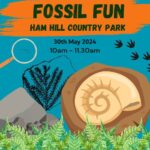 30 May 10:00am-11:30 Fossil Fun
30 May 10:00am-11:30 Fossil Fun
More details
Cost £6.00 per child
Aimed at families with children aged 4-9. All children must be accompanied by an adult at all times, accompanying adult free (max 2 adults per child).
More details:
Please email countryside@somerset.gov.uk with the number of places you require and a contact phone number. We will check the availability and confirm your place. Payment needs to be made by cash on the day please. We will respond to all emails, please check ‘junk mail’ if you haven’t received a reply.
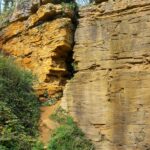 1 June 10:30am-3:30pm: The Geology of Ham Hill Guided Walk
1 June 10:30am-3:30pm: The Geology of Ham Hill Guided Walk
Following a brief introduction to the geology of the region, an opportunity to explore one of the best inland geological locations in Somerset.
Expansive views over the Somerset landscape, sculpted by the environmental upheavals of the past 400 million years.
We’ll then visit the Yeovilian Substage of the Early Jurassic, around 177 million years ago, as exposed in a number of disused quarries in the Ham Hill Limestone. These include a nationally important geological Site of Special Scientific Interest (SSSI) together with a number of Local Geological Sites.
We’ll also consider how the geology has underpinned the archaeology, history, industry, agriculture, and biodiversity of Ham Hill – and how our volunteers are working to conserve our geoheritage.
Cost £2.00 per adult
Supported by National Heritage Lottery Fund
Booking essential
Please email countryside@somerset.gov.uk with the number of places you require and a contact phone number. We will check the availability and confirm your place. Payment needs to be made by cash on the day please. We will respond to all emails, please check ‘junk mail’ if you haven’t received a reply
 Any time: Self-guided walk along the Ham Hill Geology Trail.
Any time: Self-guided walk along the Ham Hill Geology Trail.
See below. Leaflet also available from outside the Ham Hill Centre and Rangers Office, Ham Hill Road, Stoke-sub-Hamdon, Somerset TA14 6RW
[View/Download]

Part of GeoWeek 2024 Active Geoscience https://earth-science.org.uk/geoweek/
----------------------------------------------
Monday, 29 April 2024
FROME INTERNATIONAL CLIMATE FILM FESTIVAL 2024 - BE INSPIRED
FROME INTERNATIONAL CLIMATE FILM FESTIVAL 2024 - BE INSPIRED
Saturday, 27 April 2024
Two, One Day Field Courses in June, with Nick Chidlaw
Two, One Day Field Courses in June, with Nick Chidlaw
Image: part of the cliff of the River Leadon near the village of Red Marley D'Abitot, exposing fluviatile deposits of the Helsby Sandstone Formation (Early / Middle Triassic).
